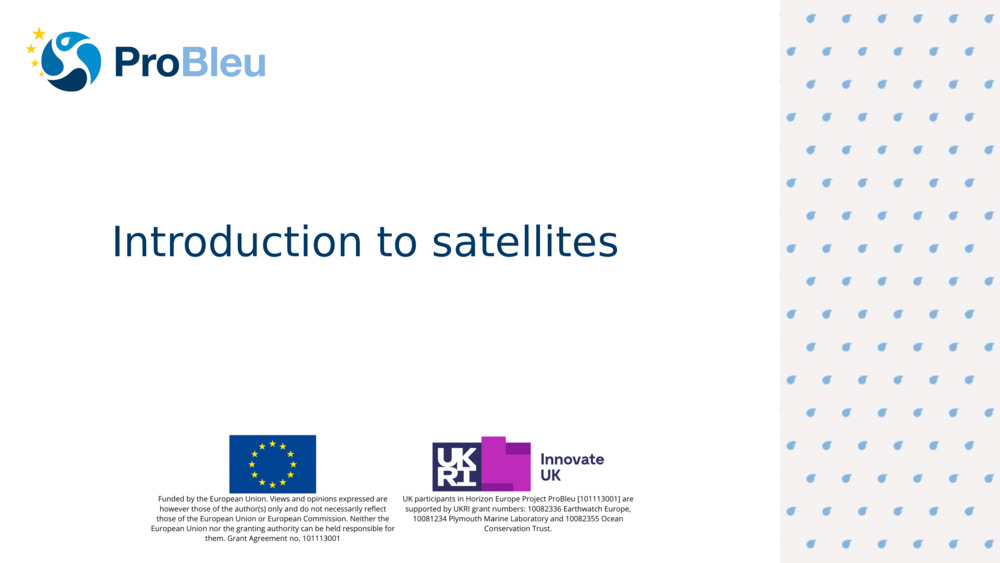Quiz - answers
Quiz - answers
Quiz - answers The Earth (orbits the sun), the Moon (orbits Earth), Other planets(e.g. Neptune, Saturn, Jupyter ) and their moons (e.g. Jupiter – Ganymede) Telecommunications, weather monitoring, scientific research (including Earth observation, or astronomy) and navigation /positioning services A geostationary orbit Active sensors generate their own energy source to illuminate a target. Passive sensors do not emit their own energy, but instead measure energy that is reflected or emitted from the target (e.g. sunlight). Satellites can collect data over large areas of Earth, they can collect this data quickly and regularly, you cannot cover such large areas or revisit the area frequently with other data collection methods. Access to satellite data can be relatively cheap compared to conducting regular field or boat work. You can access remote areas where fieldwork would be challenging.

Original Slide Deck: Science from space - Introduction to satellites
Topics: Ocean. Climate. Ocean Temperature.
Suitable Ages: 8. 9. 10. 11. 12. 13. 14. 15. 16. 17. 18.
Keywords: Climate. Ocean Colour. Satellite. Temperature. Weather.
Uploaded By: pml-admin
Number of bundles using this content: 1
Licensed under CC BY 4.0
This content has been used in the following resource bundles:
Science from space - Introduction to satellites
These slides provide an introduction to Earth Observation satellites, ...
View Bundle